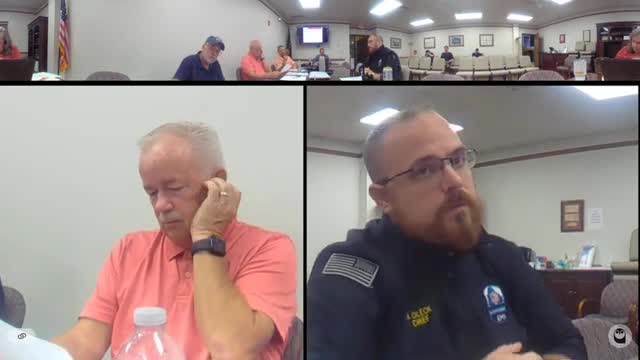Emergency Services Face Staffing Crisis Amid Rising Demand
August 08, 2024 | Scott County, Indiana
This article was created by AI summarizing key points discussed. AI makes mistakes, so for full details and context, please refer to the video of the full meeting. Please report any errors so we can fix them. Report an error »

In a recent government meeting, officials discussed the potential application for a grant aimed at supporting the local blood program, with an emphasis on the uncertainty surrounding the grant's closing date. The initial deadline was set for January 11, 2024, but with approximately $2.5 million still available, officials are exploring whether the application process is open-ended or if a definitive deadline will be established.
The meeting also highlighted pressing concerns regarding emergency medical services (EMS) staffing and operational challenges. The EMS department reported a significant increase in call volume, with runs rising from 2,723 in 2022 to an estimated 3,400 in 2024. This surge has led to discussions about the need for additional staffing and resources, particularly during peak hours when the demand for services is highest.
Officials noted that while the current staffing model is not yet at the point of requiring a fourth 24-hour ambulance, the existing resources are stretched thin. The department is currently operating multiple trucks daily, often exceeding the planned staffing levels. The conversation included considerations of the financial implications of hiring additional staff versus the costs associated with overtime and part-time personnel.
A proposal was made to explore the feasibility of funding a dedicated truck for peak hours, which could potentially reduce overtime costs. The estimated annual cost for this initiative would be around $126,000, compared to the current payroll expenses that range from $178,000 to $208,000 due to overtime and part-time staffing.
Additionally, the meeting addressed logistical challenges in transporting veterans to medical appointments, particularly to facilities in Louisville. Officials discussed the difficulties in coordinating these transports without compromising emergency response capabilities. The conversation underscored the need for a strategic approach to manage resources effectively while ensuring that both emergency and non-emergency medical needs are met.
Overall, the meeting reflected a critical juncture for local EMS services, as officials seek to balance budgetary constraints with the growing demand for medical assistance in the community. Further discussions and potential committee formations were suggested to analyze data and develop actionable solutions moving forward.
The meeting also highlighted pressing concerns regarding emergency medical services (EMS) staffing and operational challenges. The EMS department reported a significant increase in call volume, with runs rising from 2,723 in 2022 to an estimated 3,400 in 2024. This surge has led to discussions about the need for additional staffing and resources, particularly during peak hours when the demand for services is highest.
Officials noted that while the current staffing model is not yet at the point of requiring a fourth 24-hour ambulance, the existing resources are stretched thin. The department is currently operating multiple trucks daily, often exceeding the planned staffing levels. The conversation included considerations of the financial implications of hiring additional staff versus the costs associated with overtime and part-time personnel.
A proposal was made to explore the feasibility of funding a dedicated truck for peak hours, which could potentially reduce overtime costs. The estimated annual cost for this initiative would be around $126,000, compared to the current payroll expenses that range from $178,000 to $208,000 due to overtime and part-time staffing.
Additionally, the meeting addressed logistical challenges in transporting veterans to medical appointments, particularly to facilities in Louisville. Officials discussed the difficulties in coordinating these transports without compromising emergency response capabilities. The conversation underscored the need for a strategic approach to manage resources effectively while ensuring that both emergency and non-emergency medical needs are met.
Overall, the meeting reflected a critical juncture for local EMS services, as officials seek to balance budgetary constraints with the growing demand for medical assistance in the community. Further discussions and potential committee formations were suggested to analyze data and develop actionable solutions moving forward.
View full meeting
This article is based on a recent meeting—watch the full video and explore the complete transcript for deeper insights into the discussion.
View full meeting
